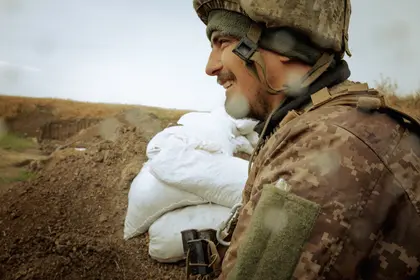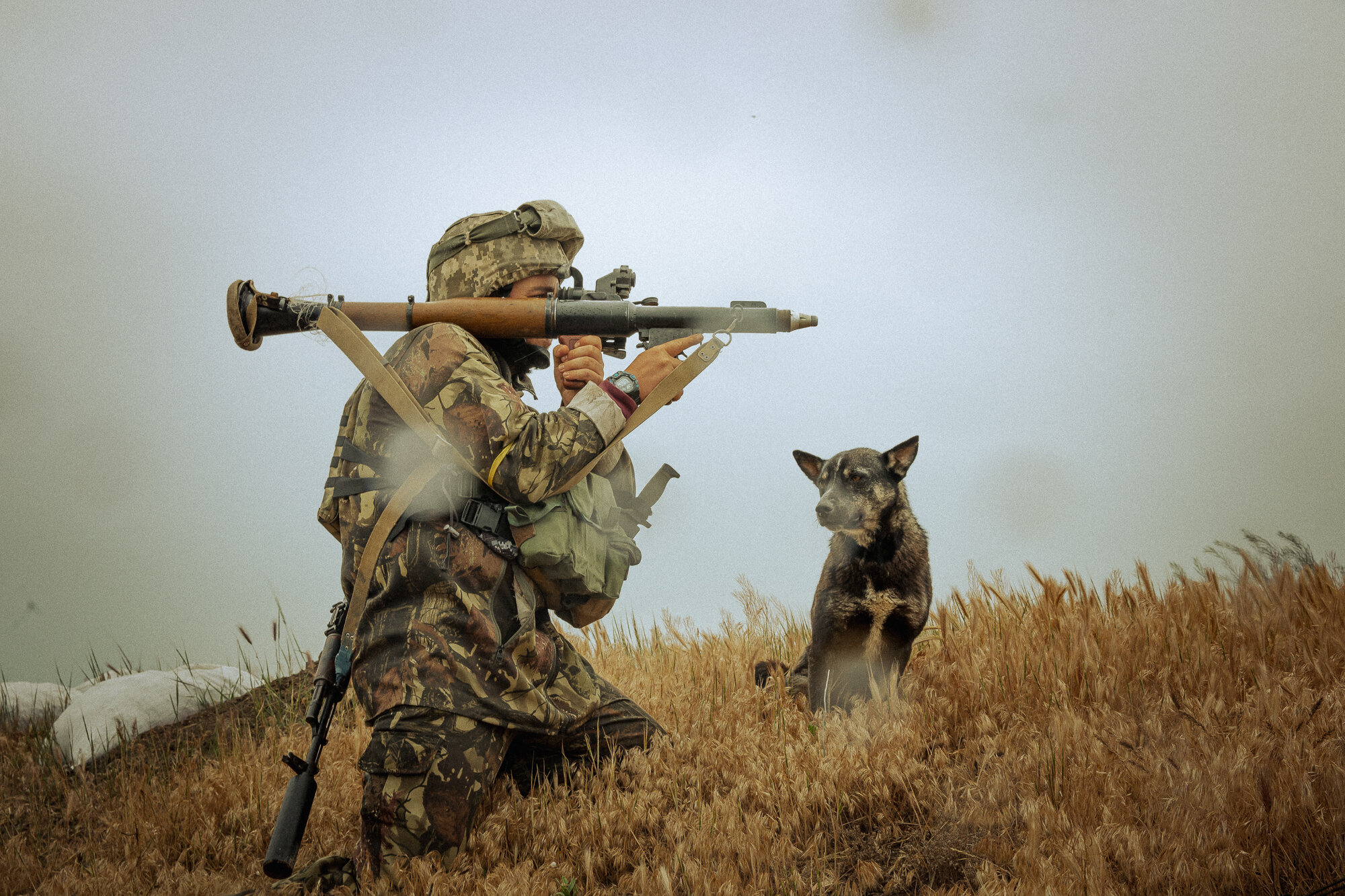A little over three months ago, Denys Chaplinsky was an ordinary civilian working in construction materials sales. He had never even seen an operational tank or anti-tank missile.
Today, Senior Private Chaplinsky is a full-time combat infantryman and a trained tank hunter.
JOIN US ON TELEGRAM
Follow our coverage of the war on the @Kyivpost_official.
Originally from Ukraine’s central city of Kirovohrad. Chaplinsky, 27, is a Ukraine Armed Forces (UAF) reservist. He’s married with a young son, Artem, who shares his father’s dark complexion and a penchant for the outdoors.
When war came to Ukraine in late February, Chaplinsky, like tens of thousands of other Ukrainians with former military service, showed up at the city military committee to volunteer.
Within a week, he found himself back in uniform and assigned to the 50th Mechanized Infantry Brigade. His wife and son stayed in Kirovohrad and chose not to leave the country.
During the first month of the war, the battlefield was constantly moving, supplies were short and ammo was at a premium. The Russians seemed to possess an endless supply of tanks, while most of the 50th Brigade comprised reservists just like Chaplinsky, so they had never actually trained together.
A soldier often has to develop many of their skills on the frontline. For Chaplinsky, along with thousands of civilian reservists assigned to arguably the toughest job in the entire Ukrainian army – grunt-level combat infantrymen – the learning curve was momentous.
Steep re-training curve
Back in 2012 when he was initially drafted, the military trained Chaplinsky to be an artillery observer. But in those days, the Ukrainian army used Soviet manuals dating back to the Second World War. Today’s modern UAF artillery observers use drones, computer tablets, GPS positioning and broadband data links.
It meant that everything Chaplinsky knew about artillery was effectively obsolete. And when war came, the UAF, in its wisdom, decided that he should be an infantryman nevertheless.
“I don’t mind not being an observer,” Chaplinsky told Kyiv Post. “But an infantryman has to learn so much more.”
Reservists like Chaplinsky, were trained or refreshed on the basics when slotted into the infantry. According to his account, the UAF army took them to firing ranges, helped them zero their AK-74 rifles for accuracy and – in some cases – throw a RGD-5 hand grenade.
The team thoroughly practiced making trenches and bunkers using picks and shovels, with no small amount of sweat. Indeed, the modern Ukrainian army strongly believes that “digging in” makes killing the enemy easier and ultimately helps to save Ukrainian lives.
But from the earliest days of the war, a whole arsenal of anti-tank rockets and missiles – totally unfamiliar to Ukrainian fighters like Chaplinsky – were pouring into the UAF from abroad.
Rapid adjustment to the latest kit
Weaponry supplied by international partners has included the Swedish AT-4 Pansarskott, Carl Gustaf 8.4cm recoilless rifle, American M72 LAW rocket and the Javelin fire-and-forget missile, Polish RPG-7W launcher tied with the PG-7VR tandem munition, and the U.K.’s Next Generation Light Anti-Armor Weapon (NLAW).
Prior to late February, Chaplinsky had never laid eyes on any one of these hi-tech foreign anti-tank weapons, nor seen them in photographs.
Meanwhile, the Russian Federation (RF) was invading Ukraine with something like 1,500 tanks and 5,000 armored fighting vehicles. Somehow, Chaplinsky and others like him, needed to learn how to operate all these foreign anti-tank weapons – and quickly.
Fighting was in progress and people were being injured or killed. But, across the Brigade, many soldiers were pulled off the frontline to attend anti-tank weapons classes. The trainers, said Chaplinsky, were UAF regular soldiers, some of whom had been taught by instructors in Germany.
The first foreign system Chaplinsky got his hands on was a Polish version of the venerable Soviet RPG-7 rocket, but with improved sights, better flight characteristics and a more powerful warhead. It’s effective out to about 300 meters (500 in a laboratory) and can torch anything built by Russia that rolls, up to a main battle tank.
According to Chaplinsky, the weapon is very simple and does the job. Once the 50th Brigade took up stable fighting positions and started digging in, there were more classes on everything from Russian Vampyr or Mukha anti-tank rockets they might capture, to Swedish Carl Gustavs and American LAWs. Neither have been issued to the 50th as yet, but might in the future.
To tackle Russian tanks, Chaplinsky described how the British taxpayer has kitted him and the 50th Brigade with a British-Swedish weapon called an NLAW – a top-market system with a computer that flies the missile to the target vehicle, directs it to the thinnest armor, and detonates the warhead there. While this is going on, the firer can take cover if he needs to.
The NLAW is an all-weather weapon and simple to operate, but the 50th infantrymen prefer to keep it out of the rain where possible to minimize the risk of malfunction.
Chaplinsky agrees with the generally held UAF opinion that the NLAW can obliterate any tank the Russians rolls in, with a single hit.
The 50th Brigade, he said, contains “more than enough” NLAWs, trained infantryman and lighter anti-tank weapons to hold UAF fortifications against, well, anything and anybody.
“If the orcs (RF units) get closer than a kilometer, we’ll burn them,” Chaplinsky said. “We’re ready, so let them come.”
You can also highlight the text and press Ctrl + Enter





